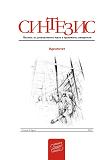Знак на Ушћу
The Sign at Ušće
Author(s): Milan PopadićSubject(s): Cultural Essay, Political Essay, Societal Essay
Published by: Центар за хуманистичке науке »Синтезис«
Keywords: sign; design; political economy of design; cultural forgetness; post-socialist city
Summary/Abstract: Transformation of urban landscape in postsocialist era goes hand in hand with promises of “the new”: new life style, new value system, new cultural model. These promises are given mostly trough dominant communication channels: visually shaped contents and strategically designed forms. This article refl ects on the emblem of Usce Shopping Centre (USC), the sign witch is based on the contemporary principles of creating visual messages. A contemporary design goes beyond common practice of shaping fine art object, and becomes rhetorical figure that produces inclusive imaginative process. Thus, in this article, multivalent semantic potential of the emblem of USC and its referent mechanism of imaginative process are being inspected. The aim is to recognize identity of the place trough its representative sign. Usce Shopping Centre is a new built section of Usce Business Centre, complex witch is sited in very significant location for Belgrade’s cultural landscape. This is manly because Usce Business Centre in its architectural structure, besides USC, includes tower that formerly was known as tower of Central Comity of Yugoslavian Communist Party (CK KPJ). New owners renovated it in contemporary corporate style, but they also planed to raise another, twin tower next to old one. Ideogram of this twin tower structure, that doesn’t yet exist (sic!), appears on the emblem of USC. Thus, main question of this article is: what this sign represents? There is no precise answer. This sign, in context of postsocialist city, creates setting for variety of interpretations. It provokes thinking about utopian character of contemporary urban structures and its position in essential cultural categories (memory, cultural landscape, comprehension …). None the less, it also creates milieu for a specific and recognizable critical discourse, currently established in Western society. Therefore, it brings a warning: if one wants to stay out of the loop, both theoretical and practical, and preserve chance for critical thinking, his mind must be open to diversity of alternatives.
Journal: Синтезис - часопис за хуманистичке науке и друштвену стварност
- Issue Year: I/2009
- Issue No: 1
- Page Range: 15-30
- Page Count: 16
- Language: Serbian

